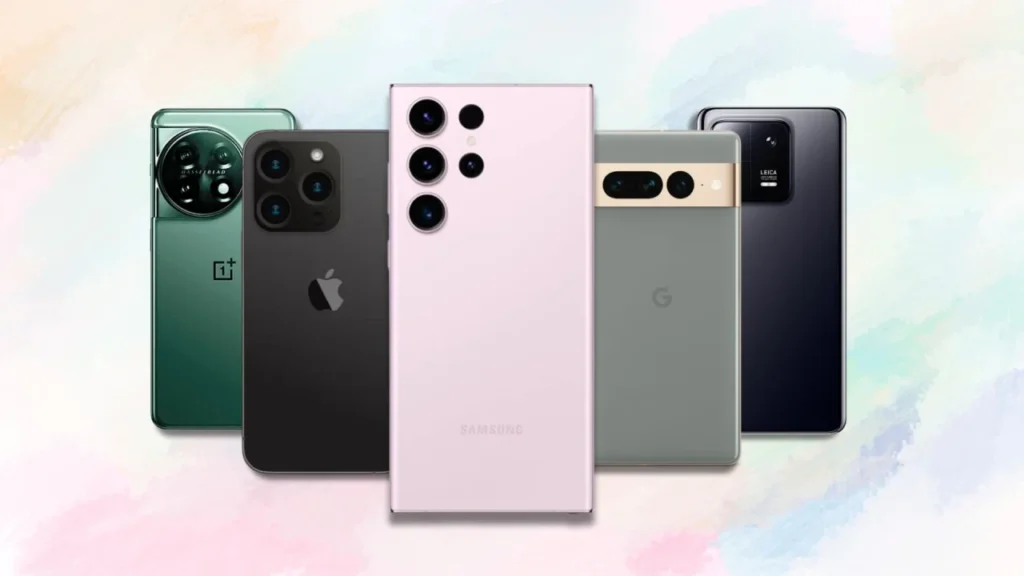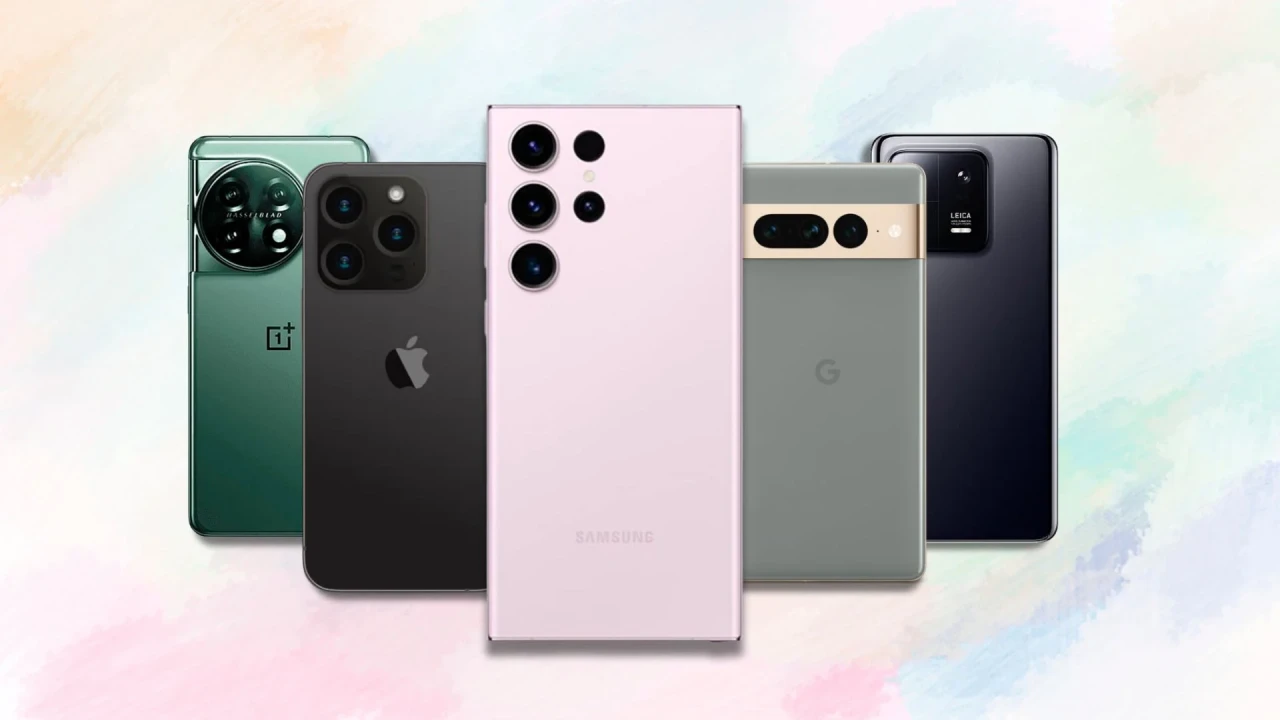The Evolution, Impact,  and Future of Mobile Phones
and Future of Mobile Phones
Mobile phones have revolutionized the way we communicate, work, and live. Once bulky devices with limited functionality, modern mobile phones have transformed into powerful, multifunctional smartphones that are indispensable in today’s society. This article explores the history of mobile phones, the technology behind them, their impact on our lives, and what the future holds for mobile devices.
1. The History of Mobile Phones
The concept of mobile communication dates back to the early 20th century, but the first real mobile phone as we know it was introduced in the 1980s. In 1973, Martin Cooper, an engineer at Motorola, made the first mobile phone call from a handheld device. This phone, the Motorola DynaTAC 8000X, weighed nearly two pounds and took 10 hours to charge for 30 minutes of talk time.
By the 1990s, the development of smaller, lighter phones with better battery life became possible, and mobile networks evolved from analog to digital. The late 1990s and early 2000s brought the advent of 2G technology, allowing for features like text messaging (SMS) and limited internet access. With the release of the first smartphones in the early 2000s, led by devices like the BlackBerry and Nokia 9000, mobile phones began to transition into devices capable of managing email, taking pictures, and browsing the web.
The release of the iPhone in 2007 marked a new era, as Apple introduced a touchscreen interface, app functionality, and a robust internet browser. This smartphone revolutionized the mobile industry, leading to the development of Android-based devices and eventually creating the competitive smartphone market we know today.
2. Key Components and Technology of Mobile Phones
Modern mobile phones are built on highly advanced technology, packed into a compact and efficient device. These devices rely on various key components, each playing a crucial role in functionality:
processor (CPU):** The central processing unit is the brain of the mobile phone, executing instructions and performing calculations for applications and tasks. Modern processors, like Qualcomm’s Snapdragon and Apple’s A-series, are highly efficient and capable of handling multitasking, AI, and gaming.
Memory (RAM) and Storage:** RAM allows phones to handle multiple applications smoothly, while storage (like an SSD or flash memory) keeps data, apps, and media files accessible. Storage capacity in mobile phones ranges from 64GB to over 1TB in high-end models.
Battery:** Mobile phones use rechargeable lithium-ion batteries. These batteries are optimized to provide a balance between long battery life and fast charging capabilities.
Display:** The evolution of mobile displays has led to high-resolution screens with OLED and AMOLED technology, delivering vibrant colors, deep blacks, and energy efficiency. Some models even feature foldable screens.
Camera System:** Cameras have become one of the most essential features of a mobile phone. Advanced lenses, AI enhancements, and multiple sensors allow users to capture high-quality photos and videos, making phones a popular choice even among professional photographers.
Operating System (OS):** iOS (Apple) and Android (Google) dominate the market. Each provides a user interface, security features, and access to a vast ecosystem of apps through their respective app stores.
Sensors and Connectivity:** Phones today include GPS for navigation, accelerometers for orientation detection, proximity sensors, and biometric scanners (like fingerprint and facial recognition). They also support various connectivity standards, including Wi-Fi, Bluetooth, and 5G networks.
3. Types of Mobile Phones
Mobile phones can be broadly classified into the following categories:
Feature Phones:** Basic mobile phones with limited functionality, designed primarily for calls and texts. They are inexpensive, have long battery life, and are popular in regions with limited access to smartphones.
Smartphones:** These devices run on sophisticated operating systems, support a wide range of applications, and offer various features like high-quality cameras, internet browsing, gaming, and more.
Gaming Phones:** Designed for mobile gaming enthusiasts, these devices have powerful processors, enhanced graphics capabilities, and high-refresh-rate screens for smooth gameplay.
Foldable Phones:** Foldable devices, such as Samsung’s Galaxy Z series, have flexible screens that allow the phone to be opened like a book or flipped to reduce its size. They represent the latest innovation in smartphone design.
4. The Impact of Mobile Phones on Society
Mobile phones have had a profound impact on society, shaping how we communicate, interact, and access information. Here are some of the key areas in which mobile phones have transformed our lives:
Communication:** The original purpose of mobile phones was communication, and this remains their primary function. They allow us to stay connected with friends, family, and colleagues anywhere in the world, supporting calls, messaging, and video calls.
Access to Information:** With internet access, mobile phones have become a primary source of information. People can search for information, read news, and learn new skills from anywhere, making knowledge more accessible.
Entertainment:** Smartphones offer various entertainment options, including streaming music and videos, playing games, and engaging with social media. This has led to a shift in how people consume content, with traditional media being replaced by on-demand, mobile-accessible options.
Work and Productivity:** Mobile phones have become essential tools for work, offering features like email, document editing, and collaboration apps. They allow professionals to work remotely and collaborate with teams globally, transforming the modern workplace.
Cdigital economy, with services like e-commerce and mobile banking reshaping how we conduct transactions.
Social and Cultural Influence:** Social media, accessed primarily via mobile phones, has become a significant cultural force. It has changed the way people express themselves, connect with others, and participate in social movements.
5. Health Implications and Concerns
While mobile phones have numerous benefits, there are also some health concerns associated with their use:
Screen Time and Mental Health:** Excessive screen time is linked to issues like eye strain, sleep disturbances, and reduced physical activity. It can also affect mental health, especially among young people, who may experience social media-related stress or reduced attention spans.
Radiation Exposure:** Although research is ongoing, concerns remain about the long-term effects of exposure to electromagnetic radiation from mobile phones. To date, no conclusive evidence links this exposure to serious health risks, but it’s an area of active study.
6. The Future of Mobile Phones
The future of mobile phones promises exciting developments, with trends pointing towards even more advanced technology and improved connectivity:
5G and Beyond:** 5G technology is already transforming mobile internet speed and connectivity, enabling more seamless streaming, gaming, and use of the internet of things (IoT). Future generations, like 6G, will likely bring even faster speeds and greater possibilities for connected devices.
Augmented Reality (AR) and Virtual Reality (VR):** Mobile phones are increasingly integrating AR and VR features. For example, AR can enhance gaming and shopping experiences, while VR can create immersive environments for education and entertainment.
Artificial Intelligence (AI):** AI is already present in features like voice assistants, cameras, and battery management. Future smartphones will likely use AI more extensively to improve performance, enhance user experiences, and provide real-time insights.
Sustainable and Eco-Friendly Phones:** With increasing concern about environmental impact, manufacturers are focusing on sustainable practices. This includes using recyclable materials, creating energy-efficient designs, and ensuring longevity through software updates.
Health Monitoring:** Phones may increasingly feature health monitoring tools, such as sensors for checking vitals and managing wellness. This could be beneficial for both personal health tracking and remote healthcare management.
Conclusion:
Mobile phones have come a long way from their early days as simple communication tools to powerful, multifunctional devices. They play a central role in our lives, influencing how we communicate, work, and access information. As technology continues to advance, mobile phones will become even more integral, connecting us to the world in new and innovative ways.

